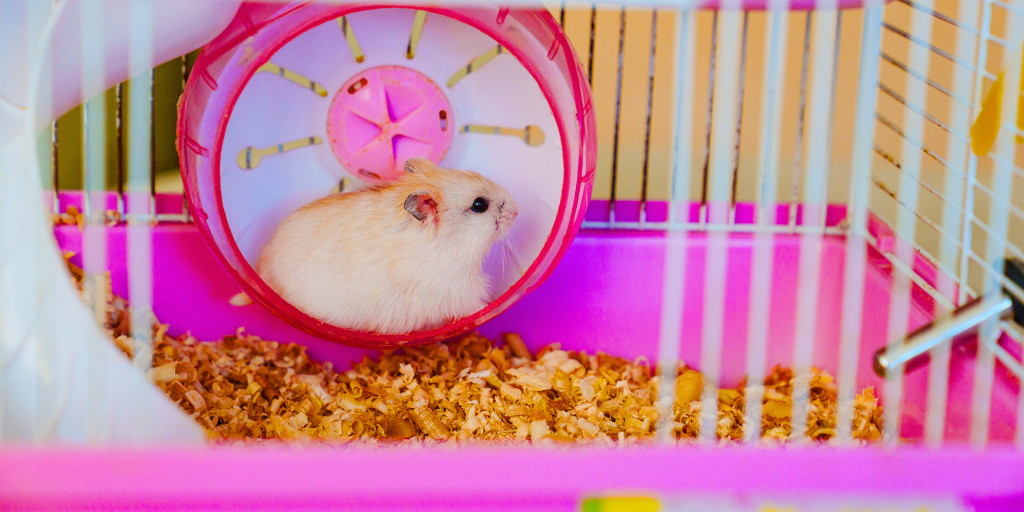
Sarah Torbeck reminds us how the human traditions of life and death are consistently filtered through the prisms of divine love and planted truth.
“Oh, and by the way, the Hamster died today.”
I read and re-read my daughter’s brief missive, as I sat in the parking lot of my grandson’s school, waiting for him to emerge from the brick and glass edifice. I grimaced a little as I let the information sink in.
The hamster died.
I thought about the tiny life I had encountered over the past four years. I recalled that “Tammy the Hammy” (you have to know my granddaughter’s unusual sense of humor) was a buff-colored, beady-eyed, wheel-bouncing bit of fluff that raced about her cage or burrowed under her bedding of paper and wood chips when a stranger entered the room.
Such a tiny, almost inconsequential being—and yet, in the grand scheme of life, she had mattered to her family, who had given her food, shelter, and their version of human-hamster love.

I leaned back on my headrest and allowed myself to be transported to the subterranean vaults of my own childhood memories—to the time when I lost my very first pet. It was our beagle who was hit by a car in the early morning hours. I was nine, and the sting of loss overwhelmed my tender sensibilities. I remember doubling over as the sheer enormity of the situation washed over me. Later that afternoon, my father buried our dog as we wept, prayed and mourned beside the little grave. Losing a cherished pet is rite of passage.
In a classic scene from Everybody Loves Raymond, the daughter in the series loses her pet hamster to a fudgesicle-in-the-freezer incident, and the family decides to hold a semi-reverent funeral for the ill-fated hamster. It’s really very funny, but within the comedic sketch there is a collective message as well: Life matters. Even the smallest bits of animated fluff … matter. I realize that they do not possess human souls, capable of self-awareness, but God deems all of His lesser creatures important enough to place them in the care of His most significant creation: us.
Now, I know what you’re thinking: I’m about drop the fallen sparrow passage; but believe it not, that’s not where I’m headed with my little narrative. Let’s read on, shall we?
Many years ago, I recall learning about Neanderthal Man (humans 40,000 years ago), in a social studies class. My teacher indicated that the condition of the Neanderthals’ graves exhibited an awareness of burial rites, the afterlife, and an affection for the deceased. No one asked me, but I remember making the connection almost immediately that early human beings recognized the essential value of life—as evidenced by their reverent treatment of their dead.

It is interesting to note that similar burial traditions have remained with us down through the ages. Practically every society throughout human history has displayed an abiding awareness (if not innate) understanding that life—especially human life—is intrinsically valuable … as evidenced by the funeral rites that have faithfully appeared throughout the millennia.
Tomorrow, my daughter’s family will bury the little furry life that made a tiny but indelible mark on their hearts. They will dig a small grave, and place Tammy in a shoebox, and probably offer a Hail Mary and an Our Father—with an additional plea to Saint Francis to care for all the animals that have been placed in our care.
And they will do all of this, because the rituals of life and death have been planted deep within the ancestral and collective memory that lies within all of us.
Why?
Because life—especially human life—is infinitely invaluable to the Creator. His creation matters. We matter. In fact, we matter so much that God sent His only Son to purchase our lives with His. The funeral rites that were faithfully performed by Christ’s loved ones on Good Friday were the familiar signposts that would provide the backdrop for the most important drama of all of time.

I realize that I began this article with the death of a tiny hamster, but her death offers my family and the human family at large an opportunity to once again recognize the shared memorials and rituals that were planted into our metaphysical foundations at the dawn of our existence. Burial rituals are potentially the most fundamental symbols of what truly matters to the Creator.
Because even in death, there is the celebration of life … even if it is the life of the tiny hamster we called “Tammy the Hammy.”
Share your thoughts with the Catholic Mom community! You'll find the comment box below the author's bio and list of recommended articles.

Copyright 2024 Sarah Torbeck
Images: Canva
About the Author

Sarah Torbeck
Sarah Torbeck is a Wife, former LEO Widow, a Mother and Grandmother. She is a former writing teacher and RCIA Director, and currently writes for several Catholic publications as well as her personal blog. (Habakkuk 3:19)


.png?width=1806&height=731&name=CatholicMom_hcfm_logo1_pos_871c_2728c%20(002).png)
Comments